Alabama sends 275 National Guard troops to border – as nation ramps up battle against influx of illegal crossings
Alabama Governor Kay Ivey has announced plans to send 275 National Guard troops to the southern border as record numbers of illegal crossings continue to plague the country.
Ivey follows governors in at least 12 other states who have sent their law enforcement resources to the border this year. The Alabama leader says she took this step because “every state has become a border state.”
“Alabama remains committed to being an integral part of the mission to protect our southern border,” she continued in a statement.
“The Alabama National Guard is always ready to protect our citizens, and I thank our 275 troops, as well as their families, for their important service to our country.”
The move to send National Guard troops to the southern border comes after more than 200,000 migrants crossed illegally into the US last month, a number that sparked anger and many blamed the crisis on President Biden.
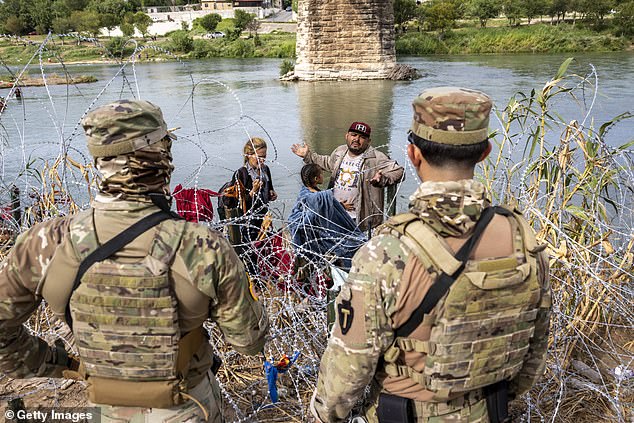
Texas National Guard troops watch as migrants cross the Rio Grande River from Mexico on September 27
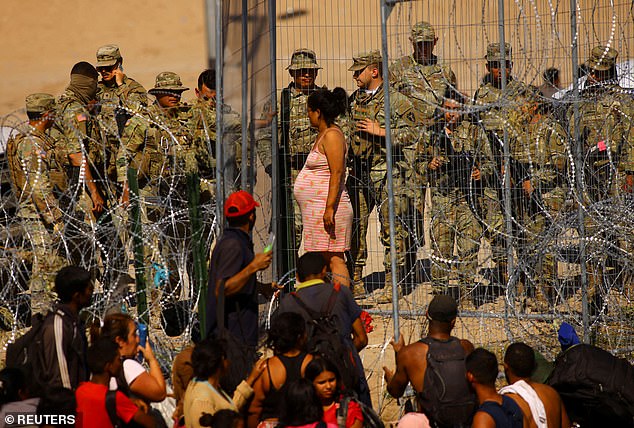

A pregnant migrant stands in front of a security fence as she is surrounded by National Guard members who have blocked the US-Mexico border crossing


Alabama Governor Kay Ivey announced Thursday that she will send 275 National Guard troops to the southern border, becoming the latest lawmaker to give up law enforcement resources in the fight against the influx of illegal border crossers.
At least thirteen states have announced plans to send law enforcement agencies to the border. Many have responded to a request from Texas Governor Greg Abbott in May to strengthen the frontlines against the crisis.
In addition to National Guard members, some chose to send various law enforcement agencies to help with practical matters such as processing, including Highway Patrol troopers sent through Ohio, Nebraska and Florida earlier this year.
In May, President Biden announced plans to send 1,500 active-duty troops to the border, in addition to the more than 2,500 National Guard troops already stationed.
But Biden has been criticized by many Republican leaders for a lack of concrete, believing his policies will significantly weaken the border during his term.
At least 13 state governors have joined the initiative to send law enforcement to the border, including Florida Governor Ron DeSantis, who sent 800 National Guardsmen in May.
Last month, California Governor Gavin Newsom also opted to increase the resources of his state’s National Guard to the border, citing the alarming amounts of drugs flowing into the US.
“Fentanyl is a deadly poison that tears families and communities apart,” he said in a speech rackwhile he increased the number of officers stationed to 60.
“California is taking tough action – and today we’re going further by deploying more CalGuard soldiers to fight this crisis and keep our communities safe.”
Other states deploying National Guard troops or law enforcement officers from interior departments this year include Arkansas, Idaho, Iowa, Nebraska and Virginia.
Taxpayers typically foot the bill for these measures, but Republican megadonor Willis Johnson donated $1 million in July to fund South Dakota’s efforts.
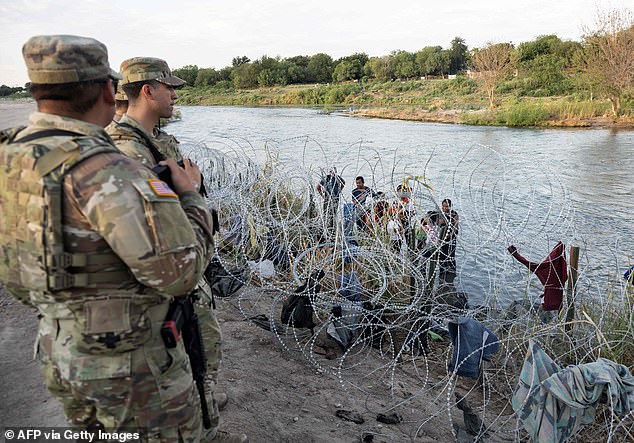

Throughout the fiscal year, more than 2.8 million migrants were apprehended by law enforcement authorities attempting to cross the border illegally
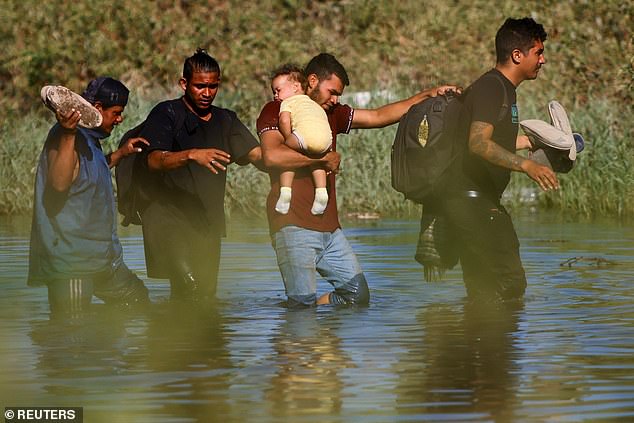

Many migrants find their way to the U.S. border after a long, dangerous journey through treacherous conditions, often wading through the Rio Grande River on their way to Texas.
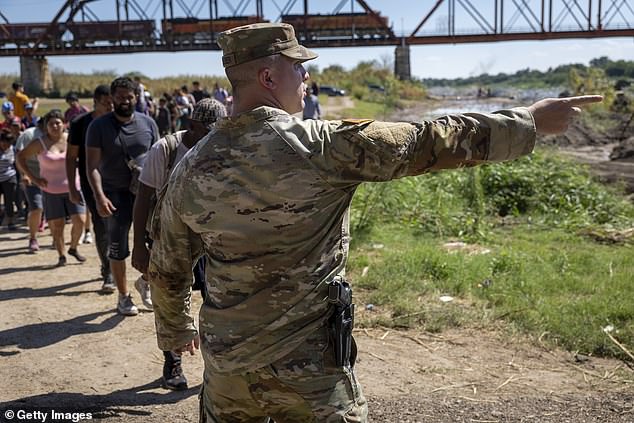

The small town of Eagle Pass, Texas, has become an epicenter of the crisis, with more than 8,000 crossings per week. The photo shows a Texas National Guard soldier at Eagle Pass on September 28
The migrant crisis has stretched lawmakers across the country, with Ivey’s announcement coming after she and 24 other governors signed an urgent letter to President Biden calling for “fair, accurate and detailed information” on the state of the situation.
“As a result of your policies that encourage illegal immigration, our states are bearing the burden of both the years-long wave of illegal border crossings and the coordinated trafficking of drugs and people by cartels,” the letter, sent on September 9, said.
Highlighting the strain state governments are feeling as the flow of migrants continues, the letter says: “States are on the front lines and working around the clock to respond to the impact of this crisis.
“Shelters are full, food banks are empty, law enforcement is stretched and first responders are exhausted.”
Her comments echo those of New York City’s Democratic Mayor Eric Adams, who has repeatedly warned in recent times that the more than 120,000 migrants flooding the Big Apple are “destroying” the city.
Adams said more than 200 emergency shelters in the city are “at full capacity,” with one of the main sources of New York’s problems coming from southern states busing migrants north to ease tension.
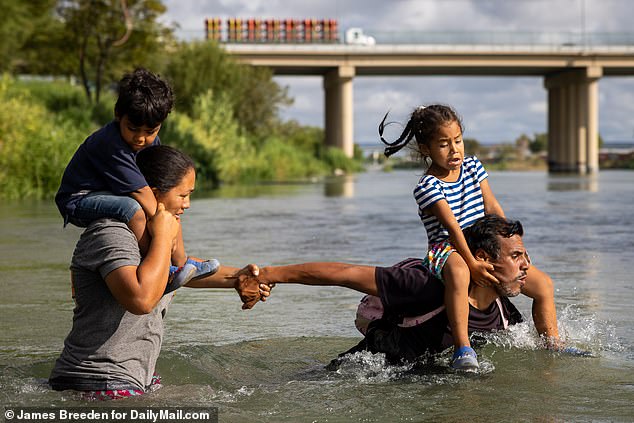

Dramatic photos show the moment migrants cross the Rio Grande River from Piedras Negras, Mexico to Eagle Pass, Texas – which has become the epicenter of border crossings lately
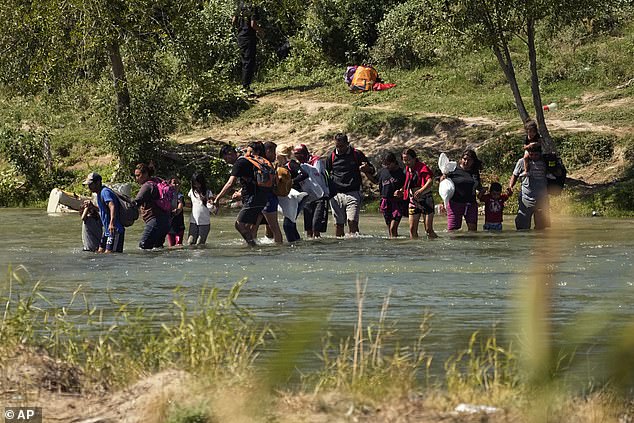

Many migrants traverse difficult conditions on their way to the U.S.-Mexico border, hoping to end up in holding cities like New York City.
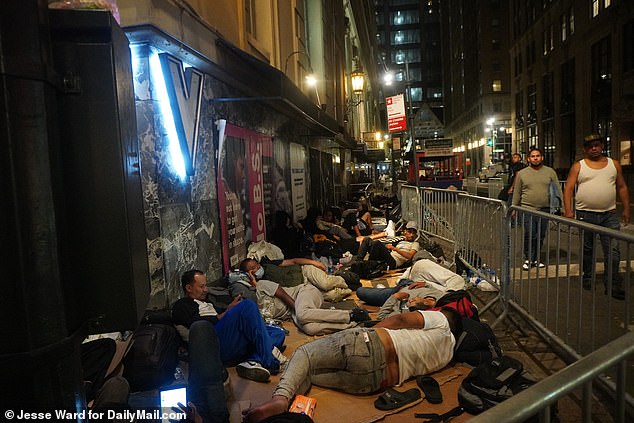

New York City officials have warned that the influx of migrants has become a humanitarian crisis in the city, costing billions of dollars, as large numbers of people are forced to sleep as the city’s resources grow scarce.
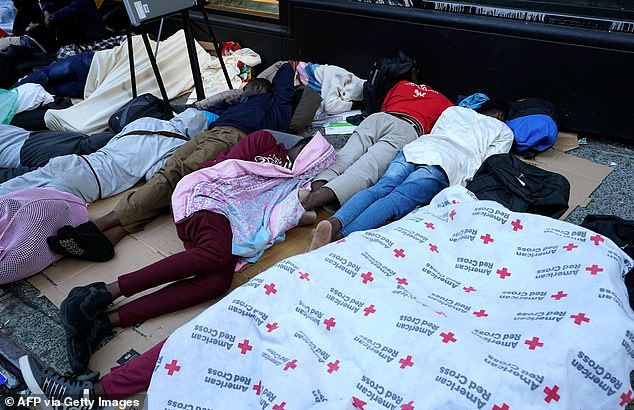

Historic landmarks like the Roosevelt Hotel (pictured outside in August) have been transformed into migrant shelters, with families being prioritized while refugees wait for shelter
But states, led by Texas, that are choosing to bus migrants to other states argue they are sharing the burden of disastrous border policies that are allowing record crossings.
In the Lone Star State, the small Texas town of Eagle Pass has become an epicenter of unprecedented crossings.
The Texas city of just 28,000 residents has been overrun by migrants in recent weeks, with the number of border crossings rising to about 8,000 per day in the week ending September 22, according to the Washington Office of Latin America.
More than 2.8 million migrants had encounters with authorities throughout the budget year, according to figures, compared to 2.7 million in 2022. Customs.
In September, preliminary data from CBS News showed that Border Patrol agents recorded an estimated 210,000 apprehensions last month — the third-highest number on record.
The colossal numbers indicate migrants entering the U.S. without authorization between official ports of entry along the Mexican border and were a significant increase from the 181,000 recorded in August, the newspaper reported.
No account is taken of those who managed to reach the other side without being stopped.
The number of apprehensions in September is the highest since December 2022, when 222,000 migrants were apprehended, the second highest monthly figure ever.
According to data from CBS News, two million illegal migrants were intercepted crossing the border in the 2023 budget year, which ends at the end of September. That is the second highest annual figure ever recorded.
In May 2022, 224,000 migrants were apprehended crossing the border illegally, setting the current record.
